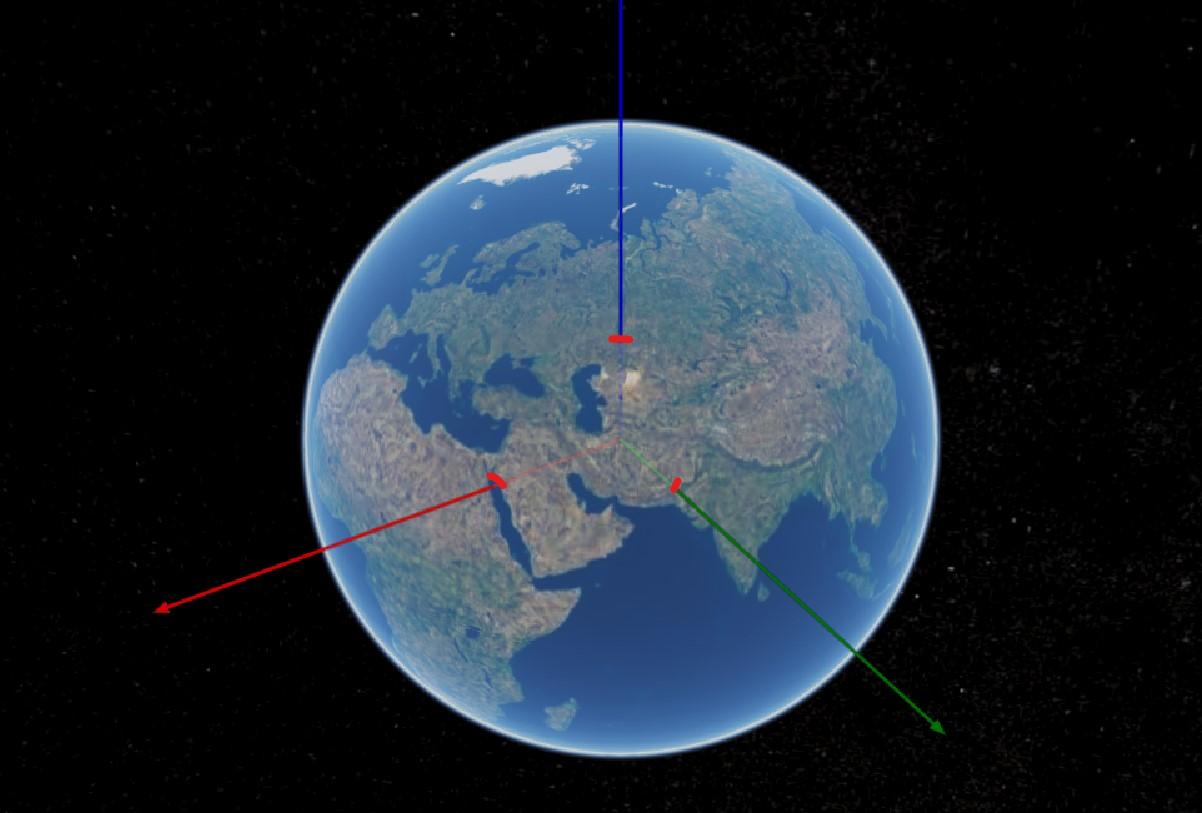1. A concise explanation of the problem you’re experiencing.
I drew 3 axes X, Y, Z by using Cesium.Polyline and used cartesian (0, 0, 0) as origin. Each length of axis is 1,000 Km, so they will be expected to be partially above ground.
To distinguish the undergound part and part above ground, I set the depthFailMaterial attributes for polyline (underground parts will be a little bit transparent).
The problem is: I noticed that the juction point of undergound part and part above ground is not fixed at a specific location, it will be moved when I rotate the globe (or tilt the camera).
(the junction point)
Demo link: http://203.66.57.234/axis/
2. A minimal code example. If you’ve found a bug, this helps us reproduce and repair it.
let xAxis = viewer.entities.add({
name : ‘X axis’,
polyline : {
positions : [new Cesium.Cartesian3(0.000001, 0, 0), new Cesium.Cartesian3(10000000(6371000), 0, 0)],
width : 10,
arcType : Cesium.ArcType.NONE,
material : new Cesium.PolylineArrowMaterialProperty(Cesium.Color.RED),
depthFailMaterial: new Cesium.PolylineArrowMaterialProperty(new Cesium.Color(1.0, 0, 0, 0.2))
}
});
let yAxis = viewer.entities.add({
name : ‘Y axis’,
polyline : {
positions : [new Cesium.Cartesian3(0, 0.000001, 0), new Cesium.Cartesian3(0, 10000000, 0)],
width : 10,
arcType : Cesium.ArcType.NONE,
material : new Cesium.PolylineArrowMaterialProperty(Cesium.Color.GREEN),
depthFailMaterial: new Cesium.PolylineArrowMaterialProperty(new Cesium.Color(0, 1, 0, 0.2))
}
});
let zAxis = viewer.entities.add({
name : ‘Z axis’,
polyline : {
positions : [new Cesium.Cartesian3(0, 0, 0.000001), new Cesium.Cartesian3(0, 0, 10000000)],
width : 10,
arcType : Cesium.ArcType.NONE,
material : new Cesium.PolylineArrowMaterialProperty(Cesium.Color.BLUE),
depthFailMaterial: new Cesium.PolylineArrowMaterialProperty(new Cesium.Color(0, 0, 1, 0.2))
}
});
3. Context. Why do you need to do this? We might know a better way to accomplish your goal.
I want to draw XYZ axes to indicate 3D models’ origin.
4. The Cesium version you’re using, your operating system and browser.
Cesium v1.58 on Windows Chrome browser (76.0.3809.100)


